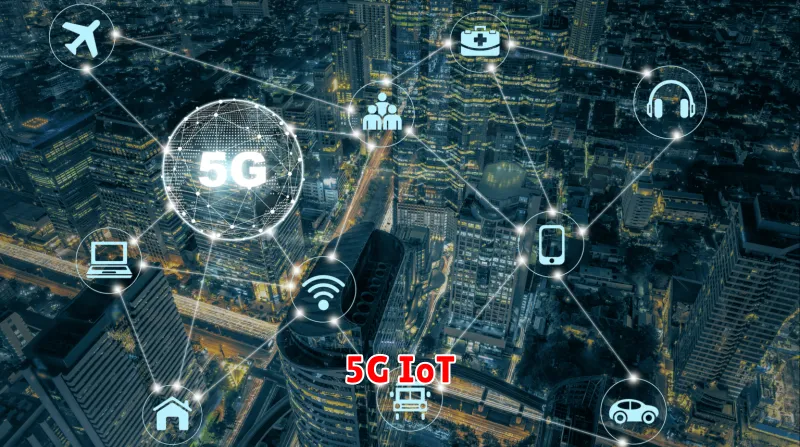The world is rapidly becoming interconnected, with billions of devices communicating and sharing data in real-time. This phenomenon, known as the Internet of Things (IoT), is revolutionizing industries and transforming the way we live. At the heart of this transformation lies the transformative power of 5G technology.
5G, the fifth generation of wireless technology, promises to unlock the full potential of the IoT. With its blazing-fast speeds, ultra-low latency, and massive connectivity capabilities, 5G is poised to empower businesses and individuals to connect and interact with the world in unprecedented ways. This article delves into the transformative power of 5G on the Internet of Things, exploring its impact on various sectors, from smart cities and healthcare to manufacturing and transportation.
Understanding 5G and its Capabilities
5G, the fifth generation of wireless technology, is the latest iteration of cellular technology. It’s designed to provide significantly faster speeds, lower latency, and greater capacity compared to its predecessors, 4G LTE and earlier generations. This leap in cellular technology is expected to revolutionize various industries and aspects of our daily lives.
Key Features of 5G
Here are some of the key features that make 5G stand out:
- Ultra-fast speeds: 5G promises download speeds up to 10 times faster than 4G, reaching speeds of up to 20 Gbps in some cases. This means faster downloads, smoother streaming, and more efficient data transfer.
- Low latency: Latency refers to the delay in data transmission. 5G drastically reduces latency, making real-time applications like online gaming, video conferencing, and remote surgery more responsive and seamless.
- Enhanced capacity: 5G can handle significantly more devices and data traffic compared to previous generations. This is crucial for supporting the growing demand for mobile internet access in a world increasingly reliant on connected devices.
- Improved energy efficiency: 5G technology is designed to be more energy-efficient, reducing battery consumption on devices and minimizing environmental impact.
Benefits of 5G
The enhanced capabilities of 5G open up a wide range of opportunities and benefits across different industries and aspects of our lives:
- Mobile gaming: 5G’s ultra-low latency and high speeds enable seamless and immersive mobile gaming experiences, making online gaming feel more responsive and realistic.
- Virtual reality and augmented reality: 5G supports the development of more immersive and interactive VR and AR experiences, with faster data transfer and lower latency enhancing the user experience.
- Smart cities and IoT: 5G’s increased capacity and connectivity facilitate the development of smart cities and the Internet of Things (IoT). This includes intelligent traffic management, smart homes, and interconnected infrastructure.
- Remote healthcare: 5G’s low latency and high bandwidth enable the delivery of remote healthcare services, such as remote surgery and real-time monitoring of patients.
- Autonomous vehicles: 5G is essential for the development and deployment of self-driving cars. It provides the necessary communication infrastructure for vehicles to share data and navigate safely.
- Industrial automation: 5G facilitates the adoption of industrial automation, allowing factories and manufacturing facilities to operate more efficiently and remotely.
Challenges of 5G
Despite its numerous advantages, 5G also faces some challenges:
- Deployment costs: Setting up a 5G network requires significant investment in new infrastructure, which can be expensive for telecom companies.
- Spectrum availability: The radio spectrum used for 5G is limited, and competition for this resource can be intense.
- Device compatibility: Not all devices are compatible with 5G, and users need to upgrade their phones or other devices to enjoy the benefits of the new technology.
- Security concerns: 5G networks are more vulnerable to cyberattacks due to their increased connectivity and data flow. Robust security measures are crucial to protect user data and infrastructure.
The Future of 5G
5G is still in its early stages of development and deployment. As the technology matures and becomes more widely available, it’s expected to have a profound impact on various industries and our daily lives. It promises to transform how we work, learn, play, and interact with the world around us.
With its ability to deliver ultra-fast speeds, low latency, and enhanced capacity, 5G has the potential to drive innovation, create new opportunities, and shape the future of technology.
The Current State of IoT Connectivity
The Internet of Things (IoT) is rapidly transforming our world, connecting devices, sensors, and systems in unprecedented ways. As the number of connected devices continues to surge, the demand for reliable and efficient IoT connectivity has become paramount. This article explores the current state of IoT connectivity, examining the key technologies, challenges, and future trends shaping this dynamic landscape.
Key Technologies
Various technologies underpin IoT connectivity, each with its strengths and limitations. Some of the most prominent include:
- Cellular Networks: Offering widespread coverage and robust performance, cellular networks are a popular choice for IoT applications.
- Wi-Fi: Cost-effective and readily available, Wi-Fi remains a strong contender for home and office IoT deployments.
- Bluetooth: Suitable for short-range communication, Bluetooth is ideal for connecting devices within close proximity.
- Low-Power Wide-Area Networks (LPWANs): Technologies like LoRaWAN and Sigfox enable long-range, low-power communication, making them suitable for asset tracking, smart metering, and environmental monitoring.
- Satellite Networks: Offering global coverage, satellite networks provide connectivity in remote or challenging environments.
Challenges Facing IoT Connectivity
Despite its rapid growth, IoT connectivity faces several challenges:
- Scalability: Handling the massive number of connected devices and the associated data traffic demands efficient network infrastructure and protocols.
- Security: Protecting IoT devices and the sensitive data they collect is critical, as vulnerabilities can lead to breaches and disruptions.
- Interoperability: Ensuring that devices from different manufacturers can seamlessly communicate is crucial for fostering a robust IoT ecosystem.
- Cost: The cost of connectivity, devices, and data storage can be a barrier to entry for some applications.
Future Trends in IoT Connectivity
The future of IoT connectivity is bright, with several exciting developments on the horizon:
- 5G and Beyond: Next-generation wireless networks will deliver ultra-low latency, high bandwidth, and increased capacity, enabling more sophisticated IoT applications.
- Edge Computing: Processing data closer to the source will reduce latency and enhance real-time responsiveness.
- Artificial Intelligence (AI): AI will play a crucial role in optimizing network performance, improving security, and enabling intelligent decision-making in IoT environments.
- The Internet of Everything (IoE): The integration of IoT with other technologies, such as blockchain and the metaverse, will create new possibilities and expand the reach of connected devices.
Conclusion
IoT connectivity is a complex and rapidly evolving field. As the number of connected devices continues to grow, overcoming challenges and embracing new technologies will be essential for realizing the full potential of this transformative technology. By addressing scalability, security, interoperability, and cost concerns, we can pave the way for a more interconnected and intelligent future.
How 5G Addresses IoT Challenges
The Internet of Things (IoT) has revolutionized the way we live, work, and interact with the world around us. With billions of connected devices generating vast amounts of data, IoT has the potential to transform industries, improve efficiency, and enhance our lives. However, the widespread adoption of IoT is hindered by several challenges, including connectivity, latency, security, and scalability. 5G technology, with its enhanced capabilities, is poised to address these challenges and pave the way for a truly connected future.
Connectivity
One of the biggest challenges facing IoT is providing reliable and ubiquitous connectivity for a massive number of devices. Traditional cellular networks, designed for human communication, struggle to handle the sheer volume and diverse requirements of IoT devices. 5G, with its wider bandwidth, higher data rates, and enhanced network capacity, offers a solution to this problem. It enables a more efficient use of spectrum, allowing for a greater number of devices to connect simultaneously. This improved connectivity ensures that even the most remote and challenging environments can benefit from IoT deployments.
Latency
Latency, the time delay between a request and its response, is another critical factor in IoT applications. Many real-time applications, such as autonomous vehicles and industrial automation, require ultra-low latency for optimal performance. 5G significantly reduces latency through its advanced features, including network slicing and edge computing. Network slicing allows for dedicated network resources for specific applications, ensuring low latency for critical services. Edge computing brings processing power closer to the devices, minimizing the distance data needs to travel and further reducing latency. These capabilities enable 5G to support time-sensitive applications that were previously impossible.
Security
Security is paramount in IoT, as connected devices often handle sensitive data and control critical infrastructure. The massive scale of IoT devices and their diverse nature make security even more challenging. 5G incorporates robust security measures to protect IoT deployments. It leverages advanced encryption techniques, secure authentication protocols, and network segmentation to minimize the risk of attacks. Furthermore, 5G facilitates secure device management, allowing for updates and patches to be deployed efficiently and effectively.
Scalability
The scalability of IoT networks is crucial to accommodate the exponential growth in connected devices. 5G, with its massive connectivity capabilities, provides the foundation for a scalable IoT infrastructure. Its ability to handle a vast number of devices and support high data volumes ensures that IoT networks can grow seamlessly without compromising performance or reliability. The flexible architecture of 5G also allows for easy integration with existing networks, making it easier to expand and adapt IoT deployments as needed.
Conclusion
5G technology is a game-changer for IoT, offering a robust solution to the challenges that have hindered its widespread adoption. Its enhanced connectivity, low latency, robust security features, and scalability make it the ideal platform for a truly connected future. As 5G continues to evolve and mature, we can expect even more innovative IoT applications to emerge, transforming industries and improving our lives in countless ways.
Enhanced Bandwidth and Data Rates for IoT Devices
The Internet of Things (IoT) is rapidly transforming various industries, enabling seamless connectivity and data exchange between physical objects and the internet. As the number of connected devices proliferates, the demand for enhanced bandwidth and data rates is paramount to ensure efficient and reliable communication.
Traditional wireless technologies, such as Wi-Fi and Bluetooth, have limitations in terms of range and data throughput, especially when supporting a large number of devices simultaneously. To address these challenges, several advancements are emerging to boost bandwidth and data rates for IoT devices.
Emerging Technologies for Enhanced Bandwidth and Data Rates
1. 5G and Beyond
The advent of 5G technology is revolutionizing wireless connectivity, offering significantly higher speeds, lower latency, and increased capacity compared to previous generations. 5G’s advanced features, including massive MIMO (Multiple-Input Multiple-Output) and beamforming, enable efficient data transmission to a multitude of devices. As the next generation of cellular technology, 6G is expected to further enhance bandwidth and data rates, paving the way for more sophisticated IoT applications.
2. Narrowband IoT (NB-IoT)
Specifically designed for low-power and long-range applications, NB-IoT offers reliable connectivity for sensor networks, smart metering, and other data-intensive IoT deployments. Its narrowband spectrum allows for increased coverage and deeper penetration, making it suitable for remote and challenging environments.
3. Low-Power Wide-Area Networks (LPWANs)
LPWANs, such as LoRa and Sigfox, are gaining popularity for their energy efficiency and long-range capabilities. They are ideal for applications where battery life and coverage are critical, such as asset tracking, environmental monitoring, and smart agriculture.
4. Wi-Fi 6 and Wi-Fi 7
The latest Wi-Fi standards, Wi-Fi 6 and Wi-Fi 7, introduce enhancements such as OFDMA (Orthogonal Frequency Division Multiple Access) and MU-MIMO (Multi-User Multiple-Input Multiple-Output), boosting throughput and capacity in dense IoT environments. They enable seamless connectivity for a multitude of devices, including smart home appliances, wearables, and industrial sensors.
Benefits of Enhanced Bandwidth and Data Rates
The benefits of enhanced bandwidth and data rates in IoT are significant and far-reaching:
- Increased Data Transmission Speeds: Faster data transfer enables real-time monitoring, control, and analysis of data from IoT devices.
- Improved Responsiveness and Latency: Lower latency ensures prompt responses and real-time control, critical for applications like autonomous vehicles and industrial automation.
- Enhanced Device Density: Higher bandwidth allows for the simultaneous connection of a greater number of devices, supporting large-scale IoT deployments.
- Support for Advanced Applications: Increased data rates enable complex IoT applications, such as high-resolution video streaming, immersive virtual reality experiences, and real-time data analytics.
Conclusion
As the IoT ecosystem continues to evolve, enhanced bandwidth and data rates are essential for unleashing the full potential of connected devices. Emerging technologies like 5G, NB-IoT, LPWANs, and Wi-Fi 6/7 are playing a crucial role in addressing the growing demand for high-speed and reliable connectivity. With these advancements, the IoT is poised to revolutionize various industries, unlocking unprecedented opportunities for innovation and efficiency.
Ultra-Low Latency for Real-Time Applications
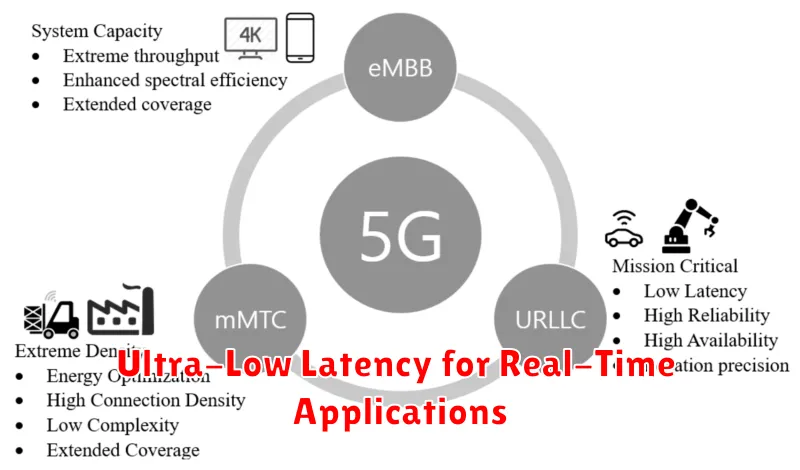
In the realm of technology, the demand for real-time applications has skyrocketed, driving the need for ultra-low latency solutions. Latency, the time delay between an action and its response, is a critical factor in the success of real-time systems. As we delve into the world of ultra-low latency, we explore its significance, challenges, and the technologies that enable it.
The Significance of Ultra-Low Latency
For real-time applications, such as online gaming, financial trading, and autonomous vehicles, ultra-low latency is paramount. A delay of even a few milliseconds can have significant consequences. Here are some key reasons why ultra-low latency is so important:
- Enhanced User Experience: In interactive applications like gaming, a slight delay can create a frustrating and unresponsive experience. Ultra-low latency ensures smooth and seamless interactions, keeping users engaged.
- Accurate Decision-Making: In financial trading, milliseconds matter. Ultra-low latency systems enable traders to react quickly to market fluctuations, gaining a competitive edge.
- Safety and Reliability: For autonomous vehicles, real-time responses are critical for safe navigation and collision avoidance. Ultra-low latency ensures that vehicles can react swiftly to changing road conditions.
Challenges of Achieving Ultra-Low Latency
Building ultra-low latency systems presents numerous challenges:
- Network Infrastructure: The physical network infrastructure, including cables, routers, and switches, can introduce latency. Optimizing network performance is crucial.
- Software Architecture: The software architecture and code base play a vital role. Minimizing processing time and optimizing code for efficiency are essential.
- Hardware Components: The hardware used, such as servers, storage, and network interfaces, can impact latency. Choosing high-performance components is critical.
Technologies Enabling Ultra-Low Latency
Advancements in technology have paved the way for ultra-low latency solutions:
- Fiber Optic Cables: Fiber optic cables offer significantly lower latency compared to traditional copper cables, enabling faster data transmission.
- Edge Computing: Bringing computing resources closer to users reduces network hops and latency. Edge computing enables real-time data processing and decision-making.
- Software-Defined Networking (SDN): SDN allows for dynamic network configuration, optimizing routes and reducing latency.
- Network Function Virtualization (NFV): NFV enables virtualizing network functions, enhancing flexibility and reducing latency by eliminating physical hardware limitations.
Conclusion
Ultra-low latency is a critical factor for real-time applications, driving innovation and pushing the boundaries of what’s possible. As technology continues to evolve, we can expect even more advancements in ultra-low latency solutions, enabling us to build more responsive, reliable, and efficient systems.
Massive Device Connectivity and Network Slicing
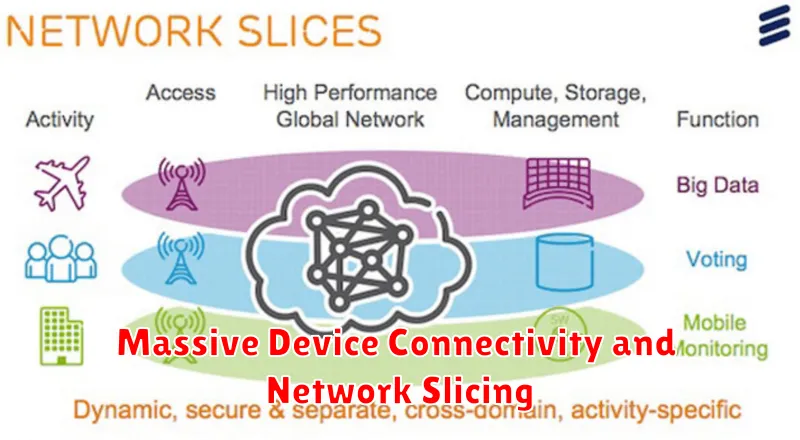
In the ever-evolving landscape of technology, the convergence of massive device connectivity and network slicing presents a transformative paradigm shift, unlocking unparalleled opportunities for innovation and growth across diverse industries.
Massive device connectivity, characterized by the exponential proliferation of internet-connected devices, is revolutionizing the way we interact with the world. From smart homes and wearables to industrial sensors and autonomous vehicles, billions of devices are constantly generating and consuming data, creating an unprecedented demand for robust and scalable network infrastructure.
Network slicing, on the other hand, empowers network operators to create virtualized network instances, known as slices, tailored to specific applications and services. Each slice can be customized with unique configurations, such as bandwidth, latency, and security settings, to meet the diverse requirements of different industries and use cases.
The synergy between massive device connectivity and network slicing creates a powerful combination. By leveraging network slicing, operators can effectively manage the immense traffic generated by billions of devices, ensuring optimal performance and reliability for various applications. This enables the seamless integration of diverse connected devices into a unified network ecosystem.
For example, in the realm of smart cities, network slicing can enable the creation of dedicated slices for traffic management, environmental monitoring, and public safety. These slices can prioritize real-time data transmission, ensuring the efficient operation of critical city infrastructure.
Similarly, in the industrial internet of things (IIoT), network slicing can facilitate the deployment of mission-critical applications, such as remote control, predictive maintenance, and automated logistics. These applications require high reliability, low latency, and robust security, which can be effectively addressed through network slicing.
Furthermore, network slicing opens up exciting possibilities for 5G and beyond. By enabling the dynamic allocation of network resources, it facilitates the deployment of new services and applications that demand ultra-low latency, high bandwidth, and massive connectivity, such as augmented reality, virtual reality, and holographic communication.
However, the realization of the full potential of massive device connectivity and network slicing requires overcoming several challenges, including network complexity, security concerns, and regulatory frameworks. Collaboration among industry stakeholders is crucial to address these challenges and drive the successful adoption of these transformative technologies.
In conclusion, the convergence of massive device connectivity and network slicing represents a pivotal moment in the evolution of communication networks. This powerful combination unlocks unprecedented opportunities for innovation, efficiency, and growth across various industries, shaping a future where billions of connected devices seamlessly interact to drive progress and enhance our lives.
5G-Enabled IoT Use Cases Across Industries
The convergence of 5G technology and the Internet of Things (IoT) has ushered in a new era of connectivity and innovation. 5G’s high bandwidth, low latency, and massive connectivity capabilities are empowering organizations across various industries to revolutionize their operations and deliver enhanced customer experiences. In this article, we will explore the transformative potential of 5G-enabled IoT use cases across different sectors.
Manufacturing
In manufacturing, 5G-enabled IoT can optimize production processes, enhance asset management, and drive Industry 4.0 initiatives.
- Real-time Monitoring and Control: 5G enables real-time data transmission from sensors on machines and equipment, allowing manufacturers to remotely monitor and control production processes, optimize resource allocation, and prevent downtime.
- Predictive Maintenance: By analyzing data from connected sensors, manufacturers can predict potential equipment failures before they occur, enabling proactive maintenance and minimizing costly disruptions.
- Automated Guided Vehicles (AGVs): 5G supports the deployment of AGVs in factories, warehouses, and distribution centers, automating material handling tasks and improving efficiency.
Healthcare
5G-enabled IoT is revolutionizing healthcare delivery, enabling remote patient monitoring, telemedicine, and precision medicine.
- Remote Patient Monitoring: 5G allows for the continuous monitoring of patients’ vital signs, medication adherence, and overall health status, empowering proactive care and early intervention.
- Telemedicine: 5G facilitates high-quality video conferencing and data transmission, enabling remote consultations, diagnostics, and treatment.
- Connected Medical Devices: 5G empowers the use of connected medical devices, such as smart implants and wearable sensors, for real-time data collection and analysis, improving patient outcomes.
Smart Cities
5G-enabled IoT is transforming urban environments, enhancing public safety, infrastructure management, and citizen services.
- Smart Street Lighting: 5G enables smart street lighting systems that automatically adjust brightness levels based on real-time traffic and weather conditions, optimizing energy consumption.
- Traffic Management: 5G supports real-time traffic monitoring and control systems, reducing congestion and improving road safety.
- Environmental Monitoring: 5G facilitates the deployment of connected sensors for air quality, noise pollution, and water quality monitoring, promoting a sustainable urban environment.
Retail
5G-enabled IoT is revolutionizing the retail industry, enhancing customer experiences, optimizing inventory management, and driving personalized services.
- Smart Stores: 5G enables smart stores with interactive displays, personalized recommendations, and seamless checkout experiences.
- Inventory Management: 5G supports real-time inventory tracking, enabling retailers to optimize stock levels, prevent stockouts, and reduce waste.
- Personalized Marketing: 5G enables retailers to collect data from connected devices and customer interactions, allowing for personalized marketing campaigns and targeted promotions.
Agriculture
5G-enabled IoT is transforming agriculture, enabling precision farming, smart irrigation, and livestock management.
- Precision Farming: 5G supports the deployment of connected sensors in fields, providing data on soil conditions, crop health, and weather patterns, enabling farmers to optimize fertilizer and pesticide application.
- Smart Irrigation: 5G facilitates the use of smart irrigation systems that adjust water flow based on real-time soil moisture levels, conserving water resources.
- Livestock Monitoring: 5G enables the use of wearable sensors on livestock, providing data on their health, location, and behavior, enabling early detection of disease and improved animal welfare.
Conclusion
5G-enabled IoT is a transformative force across various industries, enabling organizations to unlock new levels of efficiency, innovation, and customer satisfaction. By leveraging the power of 5G connectivity, businesses can harness the potential of the IoT to drive growth, enhance operations, and create a more connected and intelligent future.
Smart Cities and Infrastructure
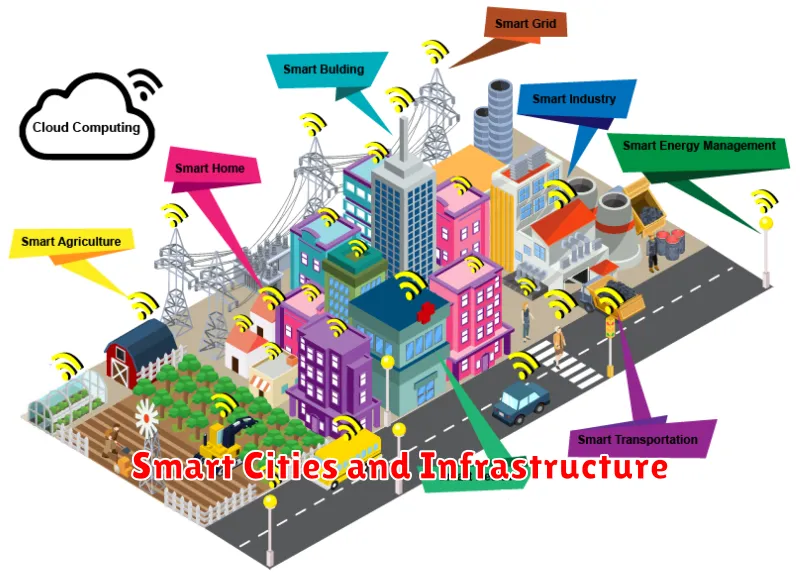
Smart cities are urban areas that use technology to improve the quality of life for their citizens. This can include using sensors to monitor traffic flow, using data to optimize energy consumption, and using mobile apps to connect citizens with city services.
One of the key components of a smart city is its infrastructure. This includes the physical infrastructure, such as roads, bridges, and buildings, as well as the digital infrastructure, such as data networks and communication systems.
Smart city infrastructure is designed to be resilient, efficient, and sustainable. For example, a smart city might use sensors to monitor traffic flow and adjust traffic lights in real time to reduce congestion. This would make the city’s transportation system more efficient and reduce greenhouse gas emissions.
Smart cities are also increasingly using artificial intelligence (AI) to improve their infrastructure. AI can be used to analyze data from sensors and other sources to identify patterns and predict problems. This information can then be used to improve the performance of the city’s infrastructure.
The development of smart city infrastructure is a complex and challenging task. It requires collaboration between governments, businesses, and citizens. However, the benefits of smart cities are significant, and they have the potential to improve the quality of life for millions of people around the world.
Industrial Automation and Manufacturing
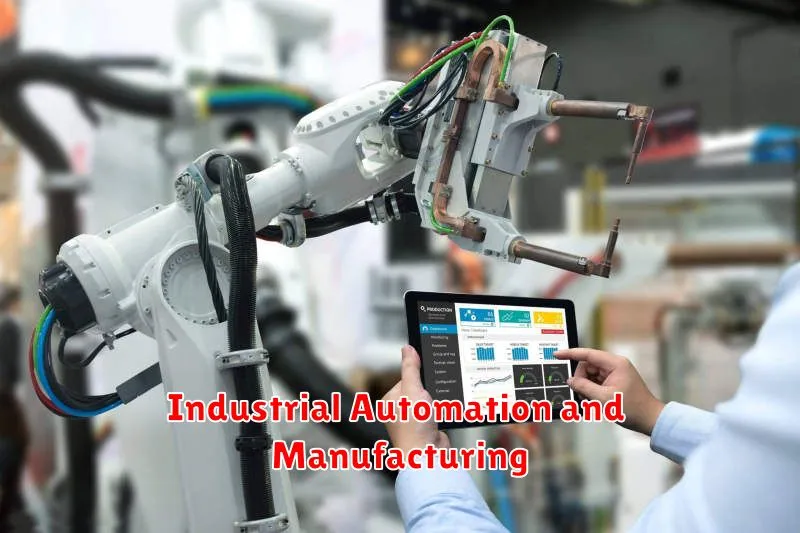
Industrial automation is the use of control systems, such as computers and robots, to automate production processes in manufacturing. This technology has revolutionized the way goods are produced, leading to increased efficiency, productivity, and quality.
Key Benefits of Industrial Automation:
- Increased Productivity: Automation allows for faster production rates, as machines can work continuously without breaks or fatigue.
- Improved Quality: Automated processes often result in less variability and more consistent product quality.
- Reduced Costs: Automation can lead to lower labor costs, reduced waste, and improved efficiency, all of which contribute to cost savings.
- Enhanced Safety: Automation can eliminate dangerous or repetitive tasks, improving safety for workers.
- Increased Flexibility: Automated systems can be easily reprogrammed to handle different products or production processes, providing greater flexibility in manufacturing.
Types of Industrial Automation:
- Robotics: Robots are used for a wide range of tasks, such as welding, painting, assembly, and material handling.
- Computer Numerical Control (CNC): CNC machines are computer-controlled tools that can be programmed to perform complex tasks with high precision.
- Programmable Logic Controllers (PLCs): PLCs are industrial computers that control and automate industrial processes.
- Supervisory Control and Data Acquisition (SCADA): SCADA systems monitor and control large-scale industrial processes, often over vast distances.
- Internet of Things (IoT): The IoT connects devices and sensors in a manufacturing environment, allowing for real-time data collection and analysis.
The Future of Industrial Automation:
Industrial automation is constantly evolving, with new technologies emerging all the time. Future trends include:
- Artificial Intelligence (AI): AI is being used to optimize production processes, predict maintenance needs, and improve quality control.
- Collaborative Robots (Cobots): Cobots are designed to work alongside humans, enhancing safety and productivity.
- Cloud Computing: Cloud-based solutions are making industrial automation more accessible and cost-effective.
- Additive Manufacturing (3D Printing): 3D printing is being used to create custom parts and prototypes, enabling faster product development and increased flexibility.
Industrial automation is transforming the manufacturing industry, driving innovation and enhancing competitiveness. As technology continues to advance, automation will play an increasingly important role in shaping the future of manufacturing.
Healthcare and Remote Patient Monitoring

Remote patient monitoring (RPM) is a rapidly growing field in healthcare that allows patients to monitor their health conditions from the comfort of their own homes. This technology uses various devices, such as wearables, sensors, and mobile apps, to collect and transmit health data to healthcare providers. RPM has the potential to improve patient outcomes, reduce healthcare costs, and enhance patient engagement.
Benefits of Remote Patient Monitoring
RPM offers numerous benefits for both patients and healthcare providers. For patients, RPM can:
- Improve adherence to treatment plans: By providing patients with real-time feedback on their health status, RPM can help them stay on track with their medications and other treatments.
- Reduce hospital readmissions: By identifying potential health issues early on, RPM can help prevent hospital readmissions.
- Enhance patient engagement: RPM can empower patients to take a more active role in managing their health.
- Improve quality of life: RPM can allow patients to live more independently and comfortably, especially those with chronic conditions.
For healthcare providers, RPM can:
- Improve efficiency: RPM can reduce the number of office visits and phone calls, freeing up healthcare providers to focus on more complex cases.
- Reduce healthcare costs: By preventing hospital readmissions and other complications, RPM can significantly reduce healthcare costs.
- Enhance patient care: RPM can provide healthcare providers with a more comprehensive view of their patients’ health status, allowing them to provide more personalized and proactive care.
Types of Remote Patient Monitoring
There are various types of RPM, depending on the specific health condition being monitored. Some common examples include:
- Cardiovascular monitoring: This includes devices such as heart rate monitors, blood pressure cuffs, and ECG devices.
- Diabetes monitoring: This involves blood glucose meters and insulin pumps.
- Respiratory monitoring: This uses devices such as peak flow meters and pulse oximeters.
- Weight management: This involves smart scales and fitness trackers.
- Mental health monitoring: This includes apps and devices that track mood, sleep, and activity levels.
Challenges of Remote Patient Monitoring
While RPM offers significant benefits, there are also challenges that need to be addressed. These include:
- Data privacy and security: Ensuring the secure and confidential storage and transmission of patient data is crucial.
- Technical issues: Device malfunction, connectivity problems, and user interface issues can hinder the effectiveness of RPM.
- Patient acceptance: Some patients may be hesitant to adopt RPM technology due to concerns about privacy, comfort levels, or technical skills.
- Reimbursement: Obtaining adequate reimbursement for RPM services from insurance companies can be challenging.
Future of Remote Patient Monitoring
The future of RPM is bright, with advancements in technology, increasing patient adoption, and growing support from healthcare providers. As RPM technology continues to evolve, it will likely play an even more crucial role in transforming healthcare delivery, improving patient outcomes, and reducing healthcare costs.
The Future of 5G and IoT Convergence
The convergence of 5G and Internet of Things (IoT) is rapidly transforming the technological landscape, ushering in a new era of interconnected devices and intelligent systems. This transformative union promises to revolutionize industries, enhance our daily lives, and unlock unprecedented possibilities.
The Power of Synergy
The synergy between 5G and IoT is unparalleled. 5G, with its lightning-fast speeds, ultra-low latency, and massive connectivity capabilities, provides the robust infrastructure needed to support the vast number of interconnected devices in an IoT ecosystem. This high-bandwidth connectivity empowers IoT devices to collect, process, and transmit data at an unprecedented scale.
Transformative Applications
This convergence unlocks a wide array of transformative applications across various sectors. In smart cities, connected sensors can optimize traffic flow, enhance public safety, and improve energy efficiency. In healthcare, remote patient monitoring, wearable devices, and telemedicine applications can revolutionize healthcare delivery. In manufacturing, IoT sensors and 5G connectivity enable real-time data analysis, predictive maintenance, and automated processes.
Challenges and Opportunities
While the future of 5G and IoT convergence holds immense promise, there are also challenges that need to be addressed. These include security concerns, data privacy issues, and interoperability challenges. However, these challenges also present opportunities for innovation and development. Advancements in security protocols, data encryption techniques, and standardized interoperability frameworks will be crucial to realize the full potential of this convergence.
A Glimpse into the Future
The convergence of 5G and IoT is poised to reshape the world around us, creating a future where connected devices seamlessly interact, fostering innovation, and improving our lives in countless ways. As this technology continues to evolve, we can expect to see even more remarkable applications and groundbreaking advancements that will redefine our relationship with technology and the world around us.

